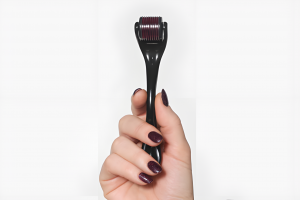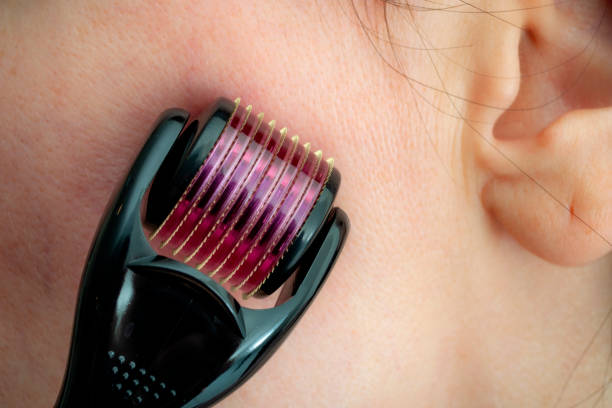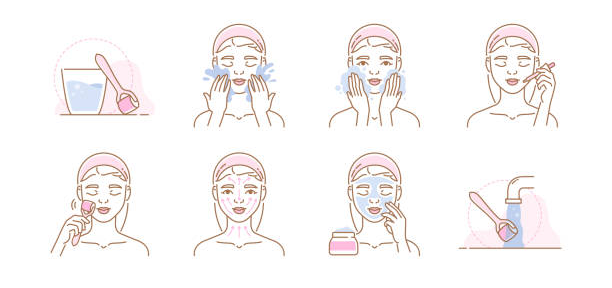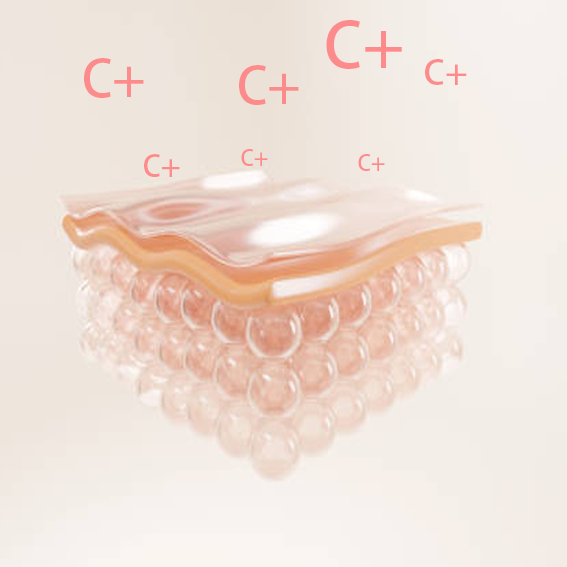- derma rollers work?
- What does derma roller do?
- Does Derma roller regrow hair?
- What a avoid when using derma roller?
- Do you put serum in before or after derma rolling?
- What are the results of a 1.5 month derma roller?
- Is it OK / use Dermaroller everyday?
- Can I use 0.25 derma roller everyday?
- Is it safe to derma roll every day?yes!
- Harnessing the Power of Microneedling: Unveiling its Remarkable Benefits and the Importance of Professional ExpertiseMicroneedling has emerged as a transformative skincare technique, capable of diminishing scars and wrinkles while nurturing the overall health of your skin. You may be curious, questioning the logic behind finding relaxation in the insertion of numerous tiny needles on your face. However, this unconventional procedure holds a plethora of advantages, as supported by Trusted Sources:
- Reduction of wrinkles and stretch marks
- Diminishment of acne scars and skin discoloration
- Promotion of increased skin thickness
- Facial rejuvenation
- Enhanced absorption of skincare products
For those seeking solutions to address these concerns from the comfort of their own homes, microneedling could very well be the answer. Nevertheless, it is crucial to acknowledge that the optimal results are achieved under the guidance of a skilled skin care professional within a clinical setting. By entrusting your microneedling procedure to the expertise of a trained professional, you can ensure the safest and most effective journey towards revitalized and radiant skin.
 Unlocking the Mystery of Microneedling: Understanding the Procedure and its Wondrous Benefits
Unlocking the Mystery of Microneedling: Understanding the Procedure and its Wondrous Benefits
Microneedling, commonly known as dermarolling or collagen induction therapy, is a highly sought-after cosmetic procedure that involves using a rolling or stamping device to insert thousands of tiny needles into the surface of your skin.
By creating microscopic wounds, dermarolling triggers the production of collagen and elastin – two essential proteins responsible for maintaining the structure and integrity of connective tissue such as skin, muscles, tendons, cartilage, and bones.
As we age, the natural production of collagen gradually decreases, resulting in skin thinning and impaired barrier function. Dermarolling effectively combats these signs of aging by stimulating collagen and elastin production, leading to a healthier, more youthful complexion.
While the thought of tiny needles puncturing your skin may seem daunting, microneedling is actually a minimally invasive procedure with little to no downtime. However, it’s important to note that the length of the needles used can affect the recovery process. The deeper the wound, the longer the recovery time – hence, longer needles may require more downtime.
Choosing the Perfect Dermaroller: Understanding the Ideal Needle Length for Your Skincare Needs
When it comes to selecting the appropriate dermaroller needle length, it’s crucial to consider your skincare goals. Generally, needle lengths ranging from 0.25 millimeters (mm) to 1.0 mm are recommended. To simplify the decision-making process, we’ve compiled a table summarizing the ideal needle length for various skincare concerns, based on Trusted Sources:
| Skincare Concern | Ideal Needle Length |
|---|---|
| Fine Lines and Wrinkles | 0.25 mm – 0.5 mm |
| Acne Scars and Hyperpigmentation | 0.5 mm – 1.0 mm |
| Stretch Marks and Deep Scars | 1.0 mm or longer |
By using the appropriate needle length for your specific skincare needs, you can optimize the effectiveness of your dermarolling procedure and achieve the best possible results. However, it’s important to note that longer needle lengths may require more recovery time and should only be performed by a trained professional.
(Note: Microneedling won’t help postinflammatory erythema (PIE), which is redness or pink blemishes.)
Mastering the Art of Dermarolling: A Step-by-Step Guide for Safe and Effective Use
To ensure a safe and infection-free dermarolling experience, it’s crucial to follow these steps precisely. Please note that the following recommendations are based on case reports and small-scale studies, and further research is needed to establish definitive treatment sessions and settings such as needle length, depth, and the number of passes.
Step 1: Disinfect your roller
Begin by disinfecting your dermaroller. Soak it in 70% isopropyl alcohol for approximately 5 to 10 minutes to effectively sterilize it.
Step 2: Wash your face
Thoroughly cleanse your face using a gentle pH-balanced cleanser. If you are using a dermaroller with needles longer than 0.5 mm, it is advisable to wipe your face with 70% isopropyl alcohol prior to the rolling process.
Step 3: Apply numbing cream, if necessary
Consider applying an anesthetic cream if you have a low pain tolerance. For needle lengths above 1.0 mm, numbing cream is recommended to alleviate discomfort as it may cause pinpoint bleeding. Follow the manufacturer’s instructions for proper application and ensure that the cream is completely wiped off before proceeding.
Step 4: Commence dermarolling
The technique employed during dermarolling is crucial. Visually divide your face into sections to facilitate the process. Avoid rolling in the shaded area, which represents the orbital (eye sockets) region.
Based on a 2015 literature review, roll in one direction approximately four times, adjusting the pressure based on your skin’s tolerance and sensitivity. Lift the roller after each pass to prevent “tram track” scarring. Repeat this process, adjusting the dermaroller slightly, until you have covered the entire treatment area.
After rolling in one direction, repeat the process in the perpendicular direction. For example, if you rolled vertically across your forehead, repeat the entire process horizontally. It is not necessary to roll diagonally, as it may lead to uneven distribution of stress and place excessive strain on the center. Proceed with caution if you choose to do so.
Step 5: Cleanse your face with water
Once you have completed the microneedling session, rinse your face thoroughly with water.
Step 6: Clean your dermaroller
Clean your dermaroller with unscented detergent. Prepare a soapy water mixture in a plastic container and vigorously swish the roller within it, ensuring it does not hit the sides. Detergents contain enzymes that can break down proteins found in the skin and blood, unlike alcohol which does not dissolve them.
By diligently following these steps, you can confidently incorporate dermarolling into your skincare routine, ensuring a safe and effective experience.
Do needle rollers really work?
Yes, dermarolling, also known as microneedling, has been shown to be effective in improving various skincare concerns. Dermarolling works by creating tiny microchannels in the skin, triggering the body’s natural healing process and promoting the production of collagen and elastin.
Studies have shown that dermarolling can improve the appearance of fine lines and wrinkles, acne scars, hyperpigmentation, stretch marks, and other skin imperfections. It can also enhance the absorption of topical skincare products, making them more effective.
However, it’s important to note that the effectiveness of dermarolling depends on various factors such as the needle length, depth, and number of passes, as well as the individual’s skin type, condition, and response to treatment. It’s recommended to seek professional advice and guidance to ensure safe and optimal results.
How often should you dermaroll?
The frequency of dermarolling depends on the length of needles you will be using. Here are the recommended maximum frequencies for dermarolling sessions based on needle length:
- Needle length (millimeters) – Frequency
- 0.25 mm – Every other day
- 0.5 mm – 1–3 times a week (start with less)
- 1.0 mm – Every 10–14 days
- 1.5 mm – Once every 3–4 weeks
- 2.0 mm – Every 6 weeks (avoid using this length for home use)
It is essential to use your best judgment and ensure that your skin has fully recovered before starting another dermarolling session.
Remember, the process of rebuilding collagen is gradual, and it takes time for the skin to regenerate itself effectively. Patience and consistency are key to achieving desired results with dermarolling.
Enhancing the Results of Microneedling with Aftercare
To optimize the results of microneedling, it’s important to follow proper aftercare practices. Here are some tips to enhance the effects of microneedling:
Utilize hydrating and collagen-boosting products: After microneedling, focus on using products that promote hydration, healing, and collagen production. One highly effective aftercare step is to use a sheet mask. Sheet masks are infused with beneficial ingredients that support collagen induction, promote pro-aging effects, even out skin tone, and enhance the skin’s barrier function.
Consider alternative products: If you’re not a fan of sheet masks, you can opt for serums or products containing specific ingredients. Look for products that contain vitamin C (ascorbic acid or sodium ascorbyl phosphate), niacinamide, epidermal growth factors, or hyaluronic acid (HA). These ingredients can further enhance the benefits of microneedling.
Exercise caution with vitamin C: If you choose to use vitamin C (ascorbic acid), be mindful of its low pH, which may potentially irritate your skin. Instead of applying it immediately after microneedling, load up on vitamin C a few days before your microneedling session. This approach allows your skin to build up a sufficient level of vitamin C without causing discomfort.
Remember, saturating the skin with vitamin C requires only three daily applications of 20% ascorbic acid, as reported by trusted sources.
By implementing these aftercare strategies, you can amplify the results of your microneedling sessions and optimize the benefits for your skin.
What to Expect After Microneedling
After undergoing microneedling, it’s important to be aware of the following post-treatment effects:
- Skin reactions: Immediately after the procedure, the skin may experience some minor bleeding and redness, which typically subsides within a few hours. It is common to feel a sensation similar to a sunburn and experience initial swelling, although the swelling is usually minimal. Some individuals may perceive a pulsing sensation as blood circulation increases in the treated area.
- Rare risks: Although less common, there are certain risks associated with microneedling. These include the possibility of dark or light spots on the skin, scarring in the form of lines (“tram track” scarring), flare-up of cold sores, swollen lymph nodes, and infection. It is important to note that such risks are infrequent.
- Temporary plumping effect: It is essential to understand that the initial plumping effect observed immediately after microneedling is temporary, and the visible swelling will subside within a few days. However, consistent and repeated microneedling sessions can yield long-term results.
- Post-treatment redness and peeling: Mild erythema (redness) may persist for approximately 2 to 3 days following the procedure. Additionally, the treated skin might start peeling. If peeling occurs, it is crucial to resist the temptation to pick at it. The peeling will naturally resolve over time.
By being aware of these aftereffects and understanding their temporary nature, you can manage your expectations and ensure proper care for your skin during the healing process.
Choosing Between Stainless Steel and Titanium Dermarollers
When deciding between stainless steel and titanium dermarollers, it’s important to consider the following factors:
- Durability: Titanium needles are made from a stronger alloy compared to stainless steel, making them more durable. Titanium needles have a longer lifespan and maintain their sharpness for a longer period of time.
- Sterility: Stainless steel is inherently more sterile. It is commonly used by medical professionals, tattoo artists, and acupuncturists. However, proper sterilization practices should be followed regardless of the material used.
- Sharpness: Stainless steel needles are generally sharper than titanium needles but tend to blunt more quickly. Titanium needles retain their sharpness for a longer duration.
- Effectiveness: Both stainless steel and titanium dermarollers can achieve the desired results. Their effectiveness in stimulating the skin and promoting collagen production is similar.
When purchasing a dermaroller, it is not necessary to choose an expensive option. Affordable dermarollers available online can work just as effectively. Some companies may offer package deals combining the dermaroller with serums, although these packages may be pricier compared to purchasing the items separately.
Consider your preferences and budget when selecting a dermaroller, as both stainless steel and titanium options can effectively serve their purpose.
When Can You Expect Results from Dermarolling?
Research has provided evidence that significant improvements in acne scarring or wrinkles can be achieved in as few as 2 to 3 sessions using 1.5 mm monotherapy. These results have been documented and supported by scientific studies.
While continued use of dermarolling yields better outcomes, researchers have observed that the results obtained after 3 sessions remain permanent even 6 months after the last treatment.
It is important to note that dermarolling should not be performed on active acne. If you have any doubts or questions, it is advisable to consult a skincare professional before proceeding.
When Can You Expect Results from Dermarolling?
Research has provided evidence that significant improvements in acne scarring or wrinkles can be achieved in as few as 2 to 3 sessions using 1.5 mm monotherapy. These results have been documented and supported by scientific studies.
While continued use of dermarolling yields better outcomes, researchers have observed that the results obtained after 3 sessions remain permanent even 6 months after the last treatment.
It is important to note that dermarolling should not be performed on active acne. If you have any doubts or questions, it is advisable to consult a skincare professional before proceeding.
Post time: Aug-15-2023






